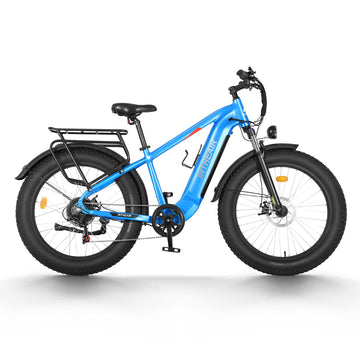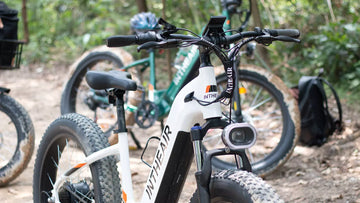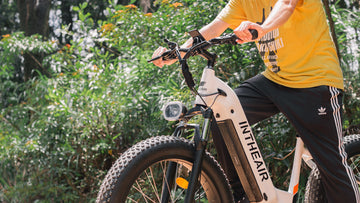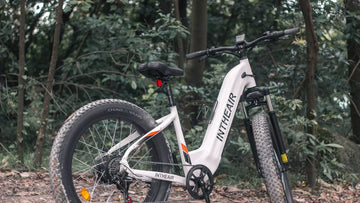The Physics of Electric Bike Construction
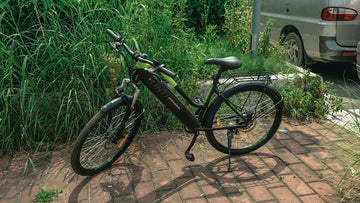
Knowledge of stability
The reason why the bicycle will not tip over during driving is mainly due to the application of the principles of physics. As we all know, for any object rotating at high speed, its direction of rotation will remain unchanged, and the object will not topple over. This is the same reason that a spinning top will not topple over. When we ride a bicycle, we give the bicycle a force in the forward direction to make the wheel rotate, and the wheel can be kept in a balanced state. After adjusting by turning the handlebar, the bicycle can move forward. Once it stops, this Without this balance, the bike will tip over.
Friction knowledge
1. Friction during starting and driving
When the bicycle starts or runs, driven by the chain, the rear wheel rotates counterclockwise, and the contact between the tire and the ground tends to move backward relative to the ground, so the ground exerts a forward friction force on the rear wheel, which is the bicycle Momentum for forward movement. Under the action of this force, the bicycle as a whole has a tendency to move forward, and the front tire of the bicycle has a tendency to move forward at the contact point with the ground, and the ground produces a backward friction force on the front wheel. Then, the front wheel turns in the same direction as the rear wheel, and the bicycle moves forward. Therefore, the rear wheel is also called the driving wheel, and the front wheel is called the driven wheel. When it rains or snows, the friction force on the ground becomes smaller, and the bicycle is easy to fall, which is commonly referred to as skidding, and this is the reason. The uneven pattern on the tires on the bicycle is to increase the friction.
2. Friction during braking
Friction is not only related to the starting of the bicycle, but also very critical to the braking of the bicycle. If the brake performance is not good, the safety of the cyclist cannot be guaranteed. People pinch the brake handle, so that the brake line drives the brake block and the tire to be close to each other, generating friction, which makes the bicycle slow down and finally stop. The magnitude of friction depends on the magnitude of the pressure and the roughness of the contact surface. The new and the old bicycles, at the same speed, use approximately the same force to pinch the brake handles. The new bicycle brakes faster because the brake pads and tires of the old bicycle are relatively smooth, and the friction generated is very small. In addition, there are uneven patterns on the handlebars, pedals, etc. of the bicycle, which also increase the friction by increasing the roughness of the contact surface.
Shock absorbing system
The bike has shock absorbers. There are five places in the bicycle that have been subjected to shock absorption: the tripod, the saddle, the headstock and the front and rear tires. The tripod, the saddle, and the headstock use springs for shock absorption, and the body uses tires for shock absorption. When the bicycle vibrates, the entire body becomes deformable, which increases the contact time with the body when the person falls, reduces the force, and improves the comfort. It's like jumping from a high place to a concrete floor, and the feet will feel pain. If a cushion is laid on the ground, and the person jumps down again, even at the same height, the feeling will not be so severe. The shock absorption not only makes the cyclist feel comfortable, but also reduces the wear and tear of the bicycle.
Pressure knowledge
1. The load capacity is engraved on the bicycle tire. If the vehicle is too heavy, the tire will be crushed due to too much pressure.
2. The seat cushion is in the shape of a saddle, which can increase the contact area between the seat cushion and the human body to reduce the pressure on the buttocks, so that people will not feel tired when riding a bicycle.
3. In summer, when the tires are fully inflated, the tires will often blow out under strong sunlight. This is because the gas in the tires absorbs heat under the sunlight, the temperature rises, expands when heated, and the pressure increases. Explosive.
4. The function of the valve core: the valve core on the inflatable inner tube acts as a one-way valve, which only allows the gas to enter and prevents the gas from leaking out, which is convenient for air intake and ensures the sealing of the inflatable inner tube.
Knowledge of simple machines
1. Leverage knowledge
A. The lever that controls the steering of the front wheel: the handlebar of the bicycle is a labor-saving lever, and people can turn the front wheel of the bicycle with a small force to control the direction of movement of the bicycle and the balance of the bicycle.
B. The lever for controlling the brake: the brake handle on the handlebar is a labor-saving lever, and people can make the brake press on the steel ring of the wheel with a relatively small force.
2. Axle knowledge
A. Pedals and disc gears on the central shaft: form a labor-saving axle (the radius of the pedals is greater than the radius of the disc gears).
B. Bicycle handlebar and front fork shaft: form a labor-saving axle (the radius of the handlebar rotation is greater than the radius of the front fork shaft).
C, the gear on the rear axle and the rear wheel: form the laborious axle (the radius of the gear is smaller than the radius of the rear wheel).
Knowledge application of work and mechanical energy
1. According to the principle of work
Effort-saving must cost distance. Therefore, when people go uphill, they often ride the "S-shaped" route for this reason.
2. Mutual conversion of kinetic energy and gravitational potential energy
For example, before riding a bicycle uphill, people often have to step up and pedal a few times to make it easier to go up. This is where kinetic energy is converted into potential energy. When cycling downhill, you don't need to pedal, and the speed is getting faster and faster. This is the conversion of potential energy into kinetic energy.
Application of the law of inertia
On a fast-moving bicycle, if the front wheel is suddenly braked, why does the rear wheel jump up? This is because the front wheels stop moving suddenly due to resistance, but the people on the car and the rear wheels do not receive resistance. According to the law of inertia, the people and the rear wheels must keep moving forward, so the rear wheels will jump up. Remember that when going downhill or at high speed, you cannot use the front brake of the bicycle alone to brake, otherwise there will be a rollover accident!
Optical knowledge
The red tail lights on bicycles cannot emit light by themselves, but they can remind car drivers to pay attention at night. Because the taillight of the bicycle is made of many honeycomb "cells", and each "cell" is composed of three reflective surfaces that are about 90 degrees. In this way, at night, when the light of the car behind hits the taillight of the bicycle, reflected light will be generated. Because the red color is eye-catching, it can attract the driver's attention. When people face the car bell, they will see their own image. This is because the shape of the car bell cover is equivalent to a convex mirror, and what people see is the upright and reduced virtual image due to reflection.

